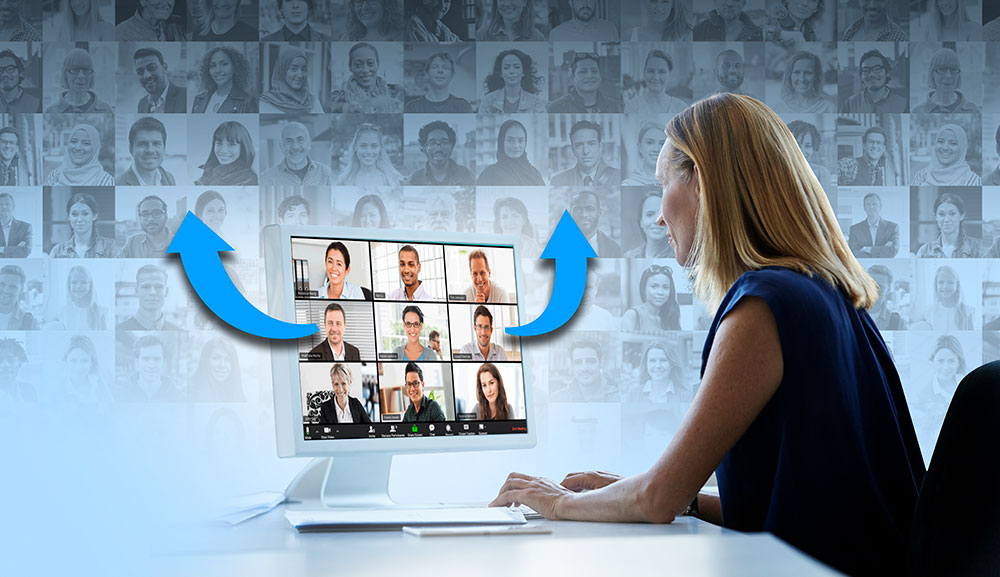With an increasing number of consumers preferring to shop and buy online, it is evident that the future of retail is most likely going to revolve around enhancing the online shopping experience for these buyers using entirely new marketing techniques. This process will involve the application of new technologies such as Augmented Reality (AR) to blur the boundaries between physical and online channels and offer unified shopping experiences to customers inside and outside retail stores.
Let’s find out how AR will change the way people shop and how retailers can leverage this technology to unlock more revenue.
Enhancing Online and In-Store Shopping Experiences
The purpose of Augmented Reality is to project the virtual world onto a real-world environment and offer an immersive experience to the user. This remarkable capability will play a fundamental role in building an entirely new and engaging shopping experience for online consumers. At the same time, AR will also change the very meaning of brick and mortar stores.
Imagine your customers looking at a hologram of a product in a physical store and ordering it online; or viewing the product holograms from the comfort of their couch, completing the purchase, and picking up the product from your nearby outlet. This new way of interaction will completely change the purpose of physical stores. Inventories on the storefront will matter less than at the back for the pick-up option.
Reducing Product Returns
With the integration of AR, online commerce platforms will also gain the capability to match the experience of trying out products as in the case of a physical store. The ability to interact with products, scale them, and visualize in their intended environments eliminates the issue of verifying the size.
This approach boosts confidence in your customers to make better judgments and complete the purchase online. It also leads to better satisfaction and reduces the possibility of returns, since consumers feel reassured that the product will fit properly. It also avoids unpleasant experiences like a color mismatch when the product arrives, matching their expectations.
New Marketing Strategies
AR content will bring a significant change in retail marketing strategies too. While promoting the try-before-you-buy strategy is one of the ways to attract customers, think of adding QR codes to billboards, promotional flyers, and other marketing collaterals to beam holograms that offer more information and provide unique brand experiences.
Imagine a person walking through the park, opening a mobile app, and visualizing the virtual grocery store with multiple isles. The individual will have the capability to pick the items, add them to the cart, and complete the checkout. The ordered products will then get delivered at home automatically, or he/she can pick them up from the store directly.
AR will also bring a dramatic change in online advertising by offering new interactions and ad formats to stand-out on crowded landing pages. Instead of 2D images or videos, brands and marketers can run 3D social and 3D programmatic display and remarketing campaigns. Interested customers can view the product in 3D, scale, and visualize the product in a real-world environment directly from the landing pages.
AR also opens new sales opportunities in the form of virtual events, where retailers and brands can set up virtual promotions and virtual product presentations to generate excitement and invite customers to exclusive, holographic-based sales events.
Will Brick and Mortar Stores Become Obsolete?
The natural reaction to these retail marketing trends is what will happen to the physical stores? Rather than going non-existent, brick and mortar stores will have its own importance in offering an omnichannel experience to customers. In the age of AR-driven online commerce, storefronts will serve more like a media to acquire customers, while online platforms will transform into real stores where transactions will happen.
“Brick-and-mortar spaces will offer retailers and brands the opportunity to draw the consumer into the brand story, deliver a remarkable and immersive brand and product experience, and ultimately galvanize their relationship with consumers,” says Dough Stephens, the founder of Retail Prophet. Stephens is also an author of two books, “The Retail Revival: Re-Imagining Business for the New Age of Consumerism” and “Reengineering Retail: The Future of Selling in a Post-Digital World.”
As a matter of fact, the partnership between AR and brick-and-mortar stores will make customer engagement more measurable, as it will bring more clarity around factors such as how people engage with a particular product packaging, or what marketing campaigns are most effective.
Are You Ready to Embrace the Change?
Although AR is still in its infant stage, the technology is already becoming an integral part for major retail brands like Home Depot, IKEA, Nike, Sephora, Pepsi, and many more. These brands are leveraging AR content to build smart, interactive experiences for their customers, while seeing a significant surge in brand awareness, customer loyalty, and increased revenues.
This new wave of immersive shopping experience is also setting new expectations for the digital customers of today. Surveys show that 48% of customers are more likely to shop at a retailer that offers an AR experience. Gartner’s prediction resonates with this trend, highlighting that 100 million customers will interact with an AR environment either online and in-store this year.
These patterns are a clear indication that in a not-so-distant future, AR models will become the norm in the buying process. Customers will naturally expect them whether they shop for footwear, apparel, furniture, or even cars.
For retailers and business owners, this is the right time to invest in Augmented Reality. Early adopters of this promising technology are going to be clear winners, creating increased profitability and long-time survival in the market.







